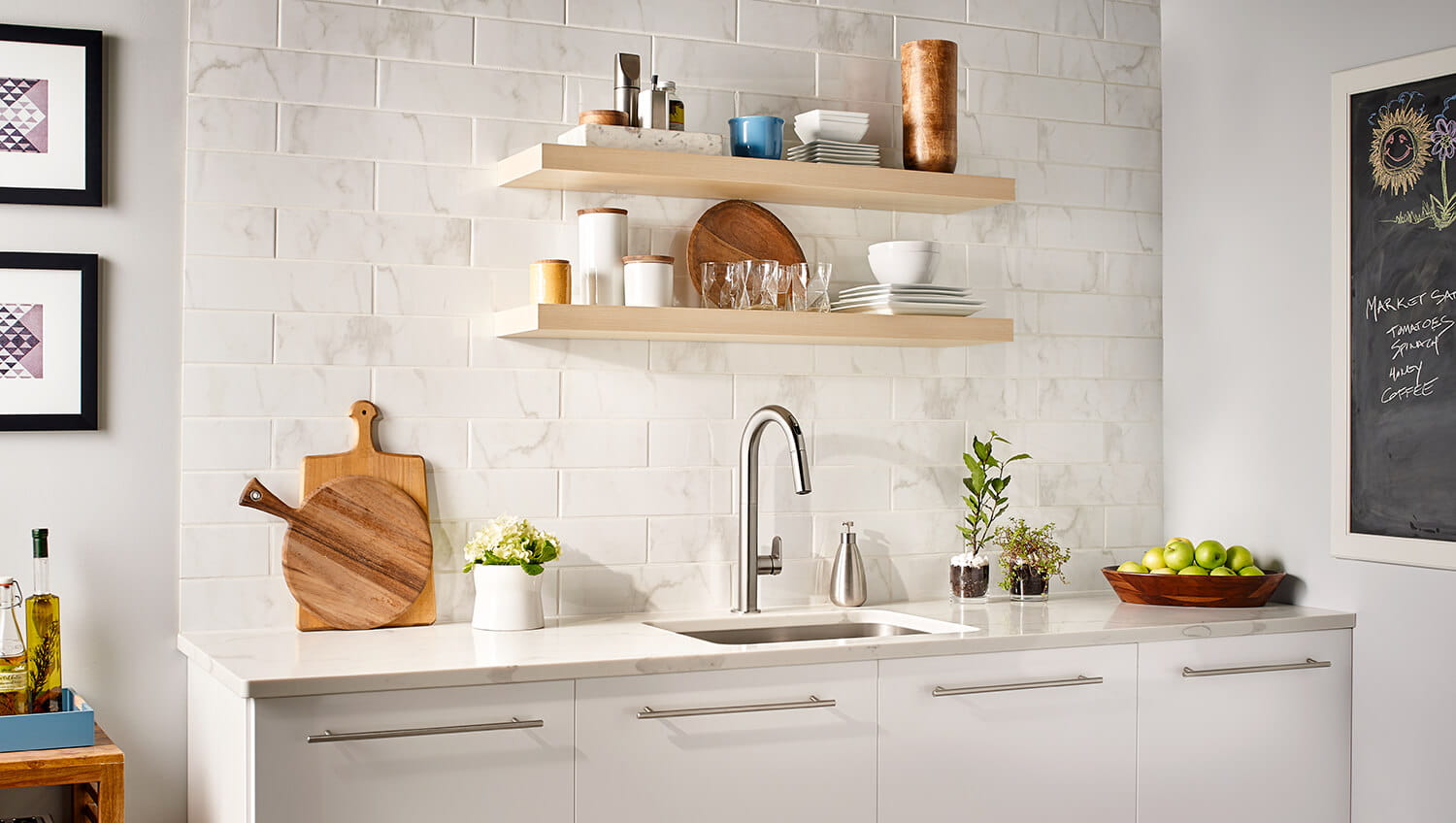

Articles
How To Choose A Kitchen Faucet
Modified: January 22, 2024
Looking for articles on how to choose a kitchen faucet? Find everything you need to know about selecting the perfect faucet for your kitchen in our informative articles.
(Many of the links in this article redirect to a specific reviewed product. Your purchase of these products through affiliate links helps to generate commission for Storables.com, at no extra cost. Learn more)
Introduction
Welcome to the world of kitchen faucets, where functionality meets style. A kitchen faucet is an essential fixture that plays a significant role in daily kitchen activities, such as washing dishes, filling pots, and even providing a source of drinking water. Choosing the right kitchen faucet can greatly enhance the functionality and aesthetics of your kitchen.
However, with the wide range of options available on the market today, finding the perfect kitchen faucet can be a daunting task. There are numerous factors to consider, including the type of faucet, the materials and finishes, water efficiency, additional features, installation considerations, and budget constraints.
In this article, we will guide you through the process of choosing a kitchen faucet that meets your specific needs and preferences. We will discuss the different types of kitchen faucets, their features and benefits, and key considerations to keep in mind during the selection process.
Whether you are looking for a sleek and modern design, a traditional and elegant style, or a highly functional and technologically advanced option, we will provide you with the necessary information to make an informed decision.
So, let’s dive into the world of kitchen faucets and discover how to choose the perfect one for your kitchen!
Key Takeaways:
- Choose a kitchen faucet that complements your style and enhances functionality. Consider finishes, materials, and additional features to create a perfect match for your kitchen decor and daily tasks.
- Prioritize water efficiency, durability, and proper installation when selecting a kitchen faucet. Balance budget considerations with long-term value to invest in a high-quality fixture that meets your needs.
Factors to Consider when Choosing a Kitchen Faucet
When selecting a kitchen faucet, there are several important factors to consider. By taking these factors into account, you can ensure that you choose a faucet that not only meets your functional needs but also complements your kitchen design. Let’s explore these factors in detail:
- Style and Design: The style and design of the faucet are essential considerations as it will greatly impact the overall aesthetics of your kitchen. Consider the design and finish of your kitchen cabinets, countertops, and sink to choose a faucet that blends harmoniously with the existing decor.
- Functionality: Different faucets offer varying levels of functionality. Consider how you will be using the faucet – do you need a sprayer for washing vegetables, a pull-out or pull-down feature for filling pots, or a touchless sensor for added convenience? Determine the functionalities you require to make your daily kitchen tasks more efficient.
- Size and Reach: It is important to select a faucet that fits your sink properly. Consider the size of your sink and the clearance needed between the faucet and the backsplash or window ledge. Additionally, check the reach of the faucet to ensure it can adequately cover the entire sink area.
- Mounting Options: Kitchen faucets are available in various mounting options, including deck-mounted, wall-mounted, and sink-mounted. Consider the installation requirements and space availability in your kitchen to determine the most suitable mounting option.
- Quality and Durability: Invest in a high-quality faucet that will withstand the rigors of daily use. Look for faucets made from durable materials such as stainless steel or brass, which are resistant to corrosion and offer longevity.
- Water Efficiency: With growing concerns about water conservation, choosing a water-efficient faucet is crucial. Look for faucets with aerators or flow restrictors that reduce water consumption without compromising performance.
- Budget: Determine your budget range before starting your faucet search. Faucet prices can vary significantly depending on the brand, materials used, and features offered. Set a realistic budget and explore options within that range.
By considering these factors, you will be well-equipped to choose a kitchen faucet that not only meets your functional needs but also enhances the visual appeal of your kitchen. In the next section, we will explore the different types of kitchen faucets available on the market.
Types of Kitchen Faucets
When it comes to kitchen faucets, there is an extensive range of options available to suit different preferences and kitchen styles. Understanding the various types of kitchen faucets can help you narrow down your choices and find the perfect one for your needs. Here are some popular types of kitchen faucets:
- Single-Handle Faucets: Single-handle faucets are the most common type found in kitchens. As the name suggests, they have a single handle that controls both the water flow and temperature. They offer simplicity and ease of use, making them a popular choice for many homeowners.
- Double-Handle Faucets: Double-handle faucets have separate handles for hot and cold water. They offer more precise control over water temperature and are often seen in traditional or vintage-style kitchens. These faucets can add a touch of elegance to your kitchen design.
- Pull-Down and Pull-Out Faucets: Pull-down and pull-out faucets feature a spray wand that can be pulled down or outwards. These faucets provide flexibility by allowing you to extend the reach of the water flow. They are ideal for rinsing dishes, filling large pots, and cleaning the sink area.
- Wall-Mounted Faucets: Wall-mounted faucets are mounted on the wall above the sink rather than on the countertop or sink deck. This type of faucet is a great option if you want to achieve a clean and streamlined look in your kitchen. However, they require proper wall plumbing and may require professional installation.
- Bridge Faucets: Bridge faucets feature a bridge-like design with two handles and a high arch spout. They offer a classic and vintage look and are often used in farmhouse or traditional kitchen designs. Bridge faucets can serve as a focal point in your kitchen and add a touch of charm.
- Commercial-Style Faucets: Commercial-style faucets are inspired by the faucets used in commercial kitchens. They are known for their robust construction, high-arc spouts, and powerful spray functions. These faucets are becoming increasingly popular in residential kitchens, providing a professional and modern look.
- Touchless Faucets: Touchless faucets use motion sensors to detect hand movements and activate the water flow, providing a hygienic and convenient option. With a simple wave of your hand, you can turn the faucet on or off, reducing the spread of germs and facilitating hands-free operation.
Each type of kitchen faucet has its own unique features and benefits. Consider your specific needs and the overall style of your kitchen to determine which type of faucet best suits your requirements. In the next section, we will delve into the finishes and materials used in kitchen faucets.
Single-Handle Faucets
Single-handle faucets, also known as single lever faucets, are a popular choice for many kitchens due to their simplicity and ease of use. As the name suggests, these faucets feature a single handle that controls both the water flow and temperature. They offer convenience and functionality in one compact design.
One of the main advantages of single-handle faucets is their intuitive operation. With a simple motion, you can adjust the water flow and temperature to your desired settings. The single handle design allows for easy one-handed operation, making it ideal for busy kitchens.
Single-handle faucets are available in a wide range of styles, finishes, and designs, allowing you to find one that complements your kitchen decor. Whether you prefer a sleek modern look or a traditional aesthetic, there is a single-handle faucet to suit your taste.
These faucets are also known for their durability and longevity. Most single-handle faucets are made from high-quality materials such as stainless steel or brass, which resist corrosion and ensure long-lasting performance. Proper care and maintenance can further extend the lifespan of your single-handle faucet.
In terms of functionality, single-handle faucets often come with additional features such as pull-out or pull-down sprayers. These sprayers provide versatility and convenience for tasks like rinsing dishes or filling pots. Some single-handle faucets also offer adjustable spray options, allowing you to switch between a steady stream and a powerful spray.
Water efficiency is another factor to consider when choosing a single-handle faucet. Many modern single-handle faucets incorporate water-saving features such as aerators or flow restrictors. These features help reduce water consumption without compromising performance, making them environmentally friendly and potentially saving you money on water bills.
Installation of a single-handle faucet is relatively straightforward, making it a popular choice for both DIY enthusiasts and professional plumbers. Most single-handle faucets come with detailed installation instructions and can be securely mounted on a sink deck or countertop.
Overall, single-handle faucets offer convenience, functionality, and a wide range of design options. Consider your specific requirements and kitchen style to choose the perfect single-handle faucet that will enhance both the aesthetics and functionality of your kitchen.
Double-Handle Faucets
Double-handle faucets, also known as two-handle faucets, bring a touch of elegance and traditional charm to any kitchen space. These faucets feature separate handles for controlling the hot and cold water, allowing for precise control over the water temperature.
One of the main advantages of double-handle faucets is their versatility in terms of design options. Whether you prefer a classic and vintage look or a more contemporary style, there is a wide range of double-handle faucet designs to choose from. They come in various finishes and materials, allowing you to find one that complements your kitchen decor.
The dual-handle design of these faucets enables you to adjust the water temperature more accurately than with single-handle faucets. Each handle represents a separate valve, giving you greater control over hot and cold water flow. This can be particularly useful when you need precise temperature control for tasks such as washing delicate dishes or preparing specific temperature-sensitive recipes.
Double-handle faucets are often chosen for traditional or vintage-style kitchens, as they evoke a sense of nostalgia and elegance. They can serve as a focal point in your kitchen, adding a touch of charm and character to the overall design.
Like single-handle faucets, double-handle faucets are available with additional features such as pull-out or pull-down sprayers. These sprayers provide added convenience for tasks like rinsing dishes or filling pots. Some double-handle faucets also offer separate sprayer handles, allowing you to control the water flow and spray functions independently.
When it comes to installation, double-handle faucets require separate hot and cold water supply lines. This may involve additional plumbing work, especially if your existing setup only accommodates a single-handle faucet. It is recommended to consult a professional plumber for proper installation to ensure optimal performance and functionality.
While double-handle faucets offer timeless elegance and precise temperature control, it is important to note that they may require more maintenance than single-handle faucets. The individual handles and valves may require occasional tightening or replacement to prevent leaks over time.
Overall, double-handle faucets are a stylish and sophisticated choice for those who appreciate traditional design elements in their kitchen. They offer precise temperature control and a wide range of design options to suit various kitchen styles. Consider your preferences and the overall aesthetic of your kitchen to choose a double-handle faucet that enhances both the functionality and visual appeal of your kitchen space.
Read more: How To Choose A Washer And Dryer
Pull-Down and Pull-Out Faucets
Pull-down and pull-out faucets have become increasingly popular choices for modern kitchens due to their versatility and convenience. These types of faucets feature a spray wand that can be pulled down or outwards to extend the reach of the water flow.
One of the main advantages of pull-down and pull-out faucets is their flexibility in performing various kitchen tasks. With the extended reach of the spray wand, you can easily rinse dishes, fill pots, or clean the sink area with greater freedom and efficiency. This feature is particularly useful for those who have large or deep sinks.
Both pull-down and pull-out faucets offer different ways of extending the spray wand. Pull-down faucets typically have a tall, high-arc spout that allows the spray wand to be pulled straight down into the sink. On the other hand, pull-out faucets have a shorter spout and the spray wand can be pulled towards you, offering more maneuverability.
These faucets often come with multiple spray settings, allowing you to switch between a steady stream, powerful spray, or aerated flow. This versatility makes them ideal for a range of tasks, from gentle rinsing of delicate produce to removing stubborn food debris from dishes.
In addition to functionality, pull-down and pull-out faucets are available in various designs to complement any kitchen style. They come in different finishes and materials, allowing you to choose one that matches your kitchen aesthetic. Whether you prefer a sleek and modern look or a more traditional design, there is a pull-down or pull-out faucet to suit your taste.
When it comes to installation, pull-down and pull-out faucets typically require a single-hole installation in the sink or countertop. They usually come with a deck plate that can cover additional holes if needed. Installation can be done by following the manufacturer’s instructions, and it is recommended to use a professional plumber if you are unsure or have specific requirements.
It’s worth considering the size and weight of the spray wand when choosing a pull-down or pull-out faucet. Opt for a spray wand that is comfortable to hold and maneuver, as well as one that retracts smoothly and securely back into the spout.
Overall, pull-down and pull-out faucets offer excellent versatility and functionality, making them a popular choice for modern kitchens. Their extended reach and multiple spray settings provide convenience for everyday kitchen tasks. Consider your specific needs and kitchen design to choose a pull-down or pull-out faucet that enhances the functionality and aesthetics of your kitchen.
Wall-Mounted Faucets
Wall-mounted faucets offer a unique and stylish option for those looking to add a touch of elegance and sophistication to their kitchen design. Unlike traditional faucets that are mounted on the countertop or sink deck, wall-mounted faucets are installed on the wall above the sink.
One of the main advantages of wall-mounted faucets is the clean and streamlined look they provide. By eliminating the need for a faucet on the countertop or sink, these faucets create a minimalist and clutter-free appearance that can greatly enhance the overall aesthetic of your kitchen.
Wall-mounted faucets also offer flexibility in terms of sink and countertop design. Since the faucet is not attached to the sink, it allows for more freedom in choosing different sink styles and materials. It can also make cleaning the sink area more convenient, as there are no obstructions around the sink edges.
When it comes to installation, wall-mounted faucets require proper wall plumbing, which may involve additional work and expenses. It is recommended to consult with a professional plumber to ensure the installation is done correctly and to avoid any potential issues with water leaks or drainage.
Wall-mounted faucets come in various designs and finishes, allowing you to find one that complements your kitchen style. Whether you prefer a sleek and modern look or a more traditional design, there are wall-mounted faucets available to suit your taste.
Functionality-wise, wall-mounted faucets often have a longer spout reach compared to other types of faucets. This can provide more convenience when it comes to filling large pots or containers in the sink. Some wall-mounted faucets also offer additional features such as adjustable water flow and temperature control.
It is important to note that wall-mounted faucets may require extra care and maintenance. Since the plumbing is located behind the wall, any repairs or replacements can be more complicated and may involve removing part of the wall. Regular inspections and proper maintenance can help avoid potential issues and prolong the lifespan of your wall-mounted faucet.
Overall, wall-mounted faucets offer a sleek, modern, and space-saving solution for your kitchen. They provide a unique design element and can transform the overall look and feel of the space. Consider your kitchen layout, style, and budget to determine if a wall-mounted faucet is the right choice for you.
Bridge Faucets
Bridge faucets are a popular choice for those looking to add a touch of elegance and vintage charm to their kitchen. These faucets feature a bridge-like design with two handles and a high-arc spout, reminiscent of traditional and farmhouse-style kitchens.
One of the main advantages of bridge faucets is the visual appeal they bring to a kitchen. The distinctive bridge design creates a focal point in the space, adding a classic and timeless touch. Bridge faucets can be a perfect choice if you are looking to create a traditional, vintage, or rustic aesthetic in your kitchen.
Bridge faucets offer the benefit of separate handles for hot and cold water. This allows for precise control over water temperature, ensuring that you can achieve the desired warmth for various kitchen tasks. The two-handle design adds a sense of authenticity, harking back to a bygone era.
In addition to their aesthetic appeal, bridge faucets also provide practical functionality. The high-arc spout of bridge faucets offers ample clearance, making it easier to fill and clean large pots and pans. The added height also allows for more comfortable access to the sink, reducing strain on your back and arms.
Bridge faucets come in a variety of finishes and materials to suit different kitchen styles. Whether you prefer a polished chrome finish for a more modern look or an oil-rubbed bronze finish for a vintage feel, there are options available to match your design preferences.
Installation of bridge faucets may require professional assistance, especially if you are replacing an existing faucet or have specific plumbing requirements. Ensuring a proper and secure installation is crucial to prevent any leaks or issues with the faucet over time.
It is important to note that bridge faucets may require regular maintenance to keep them in optimal working condition. Periodic cleaning, especially around the handles and spout, can help prevent the buildup of mineral deposits or tarnish and preserve the faucet’s appearance and functionality.
Overall, bridge faucets are a beautiful and distinctive choice for those seeking a vintage or traditional look in their kitchen. They combine nostalgia with modern functionality, providing a balance between form and function. Consider your kitchen style, size, and specific needs to determine if a bridge faucet is the perfect addition to your kitchen space.
When choosing a kitchen faucet, consider the height and reach of the spout to ensure it will accommodate your sink and provide enough clearance for washing dishes.
Commercial-Style Faucets
Commercial-style faucets have gained popularity in residential kitchens due to their sleek design, durability, and professional-grade performance. Inspired by the faucets used in commercial kitchens, these faucets bring a touch of modernity and sophistication to any kitchen space.
One of the main advantages of commercial-style faucets is their robust construction. They are typically constructed from high-quality materials such as solid brass or stainless steel, making them durable and resistant to corrosion. This ensures longevity and reliability, even with heavy daily use.
In terms of functionality, commercial-style faucets are designed for efficiency and convenience. They often feature a high-arc spout that provides ample clearance for large pots and pans, allowing you to easily fill or clean them without any restriction. The professional-grade spray function provides a powerful and precise stream of water, making cleaning tasks a breeze.
Commercial-style faucets often come with additional features like a flexible hose or a pull-down sprayer. These features offer versatility in directing the water flow and provide ease of use for various tasks, from rinsing dishes to washing vegetables. Some models even have multiple spray options, allowing you to switch between different water patterns according to your needs.
These faucets are known for their sleek and modern design, making them a focal point in any kitchen. They offer a professional and sophisticated look, often complemented by a brushed or polished chrome finish. The clean lines and minimalist aesthetics of commercial-style faucets can enhance the overall contemporary look of your kitchen.
Installation of commercial-style faucets may require some additional steps compared to standard faucets. Depending on the specific model, you may need to ensure proper mounting and connection to the water supply lines. It is advisable to seek assistance from a professional plumber to ensure the proper installation and functionality of the faucet.
In terms of maintenance, commercial-style faucets are relatively easy to clean. Regular wiping with a soft cloth and mild soap should keep them looking new. Some models even feature a spot-resistant finish, reducing the appearance of fingerprints and water stains.
Overall, commercial-style faucets offer a combination of style and functionality. They are a great choice for those who desire a professional and modern look in their kitchen, mimicking the efficiency and performance of faucets found in commercial settings. Consider your kitchen style, space, and needs to determine if a commercial-style faucet is the perfect addition to your kitchen.
Touchless Faucets
Touchless faucets, also known as motion-sensor faucets, have become increasingly popular in modern kitchens due to their convenience, hygiene, and advanced technology. These faucets are equipped with motion sensors that automatically detect the presence of your hands and activate the water flow, eliminating the need to touch the faucet handles.
One of the main advantages of touchless faucets is the enhanced hygiene they provide. By eliminating the need to touch the faucet handles with dirty or soapy hands, touchless faucets help reduce the spread of germs and bacteria, promoting a cleaner and healthier kitchen environment. They are particularly beneficial in households with infants, elderly individuals, or individuals with limited mobility.
In addition to improved hygiene, touchless faucets offer convenience and ease of use. With a simple wave or motion of your hand, the water flow is activated, making it effortless to turn the faucet on and off. This hands-free operation is especially convenient when your hands are occupied with food preparation or dirty dishes.
Touchless faucets are often equipped with advanced technologies to enhance their functionality. Some models include features such as automatic shut-off timers, temperature control settings, and adjustable water flow sensors. These features allow you to customize the water temperature and flow duration according to your preferences and needs.
Installation of touchless faucets follows a similar process to that of traditional faucets. However, they will also require a power source, typically batteries or an electrical outlet, to operate the motion sensor. It is recommended to consult a professional plumber or electrician for proper installation, especially if electrical work is required.
Touchless faucets are available in various designs and finishes to suit different kitchen styles. Whether you prefer a modern and sleek appearance or a more traditional look, there are touchless faucets to match your aesthetic preferences.
It’s important to note that touchless faucets do require some maintenance. Regular cleaning around the sensor area is necessary to ensure proper functionality. Clearing any debris or buildup from the sensor will help maintain the optimal performance of the touchless feature. In addition, periodically checking and replacing the batteries, if applicable, will ensure uninterrupted operation.
In summary, touchless faucets bring a whole new level of convenience, hygiene, and advanced technology to the kitchen. With hands-free operation and improved cleanliness, these faucets provide a modern and sophisticated solution for homeowners. Consider your kitchen needs, preferences, and budget to determine if a touchless faucet is the perfect addition to your kitchen.
Finishes and Materials
When choosing a kitchen faucet, considering the finishes and materials is crucial as they greatly impact both the appearance and durability of the faucet. There is a wide range of finishes and materials available, each offering its own unique characteristics and aesthetic appeal. Here are some popular options to consider:
- Chrome: Chrome is one of the most common finishes for kitchen faucets. It offers a sleek and polished appearance that complements a variety of kitchen styles. Chrome is also known for its durability and resistance to tarnishing, making it a popular choice for many homeowners.
- Stainless Steel: Stainless steel is another popular choice for kitchen faucets. It has a modern and timeless look that works well in contemporary or industrial-style kitchens. Stainless steel is highly durable, resistant to corrosion, and easy to clean, making it a practical option for busy kitchens.
- Brushed Nickel: Brushed nickel provides a warm and subtle look, with its matte finish and soft, brushed texture. This finish is popular among homeowners who prefer a more understated and refined aesthetic. It is also resistant to fingerprints and water spots, maintaining its appearance over time.
- Oil-Rubbed Bronze: Oil-rubbed bronze offers a rich, vintage, and rustic appearance. This finish is often chosen to create a traditional or farmhouse-style look in the kitchen. Oil-rubbed bronze faucets add character and warmth to the space but may require additional care to prevent scratching or wearing of the finish.
- Copper: Copper finishes lend a unique and eye-catching appeal to kitchen faucets. The warm and distinctive look of copper brings a touch of elegance and luxury to the kitchen. However, it is important to note that copper can patina over time, which some may find appealing while others may prefer to maintain its original shine through regular maintenance.
- Brass: Brass finishes offer a classic and traditional look. They can range from a bright, polished brass to an antique, aged brass finish. Brass faucets add a vintage charm to the kitchen and can complement various design styles. It is important to care for and clean brass finishes properly to prevent tarnishing and fading.
When it comes to materials, solid brass and stainless steel are highly recommended for their durability and longevity. They offer resistance to corrosion and provide a solid and long-lasting construction. Additionally, faucets with ceramic disc valves are preferred as they offer smooth operation and are less prone to leaks compared to traditional rubber washers.
Ultimately, the choice of finish and material depends on your personal style, desired aesthetic, and level of maintenance you are willing to undertake. Consider the overall design and color scheme of your kitchen to select a finish that complements the space and creates a cohesive look. Paying attention to the quality and durability of the material will ensure that your kitchen faucet stands the test of time.
The Importance of Water Efficiency
Water efficiency is a crucial consideration when choosing a kitchen faucet. With increasing concerns about water scarcity and the need to conserve this precious resource, opting for a water-efficient faucet can make a significant difference. Here are some reasons why water efficiency is important:
- Conservation of Natural Resources: By choosing a water-efficient faucet, you can contribute to the conservation of our natural water resources. Water scarcity is a growing concern in many regions, and using less water in our daily activities, such as washing dishes or filling pots, can help preserve water supplies for future generations.
- Reduced Environmental Impact: Water efficiency not only saves water but also has a positive impact on the environment. The energy required to treat and distribute water adds to carbon emissions and environmental degradation. By using less water, you are reducing the demand for energy-intensive water treatment processes, resulting in a lower carbon footprint.
- Lower Water Bills: Water-efficient faucets can help reduce your water consumption and, subsequently, your water bills. These faucets typically incorporate features such as aerators or flow restrictors, which limit the amount of water flowing through the faucet without compromising performance. By using less water, you can save money on your utility bills over time.
- Sustainability for Future Generations: Choosing water-efficient fixtures and appliances not only benefits you personally but also helps create a more sustainable future for generations to come. By practicing responsible water usage habits and selecting water-efficient products, we can ensure the availability of clean water for future generations and mitigate the impact of water scarcity on communities around the world.
- Meeting Regulatory Standards: Many regions have implemented water conservation regulations and guidelines to address water scarcity issues. By installing water-efficient faucets that meet these standards, you can ensure compliance with local regulations and contribute to the overall conservation efforts within your community.
Water efficiency in faucets is often achieved through the inclusion of aerators or flow restrictors. These devices mix air with the water flow, reducing the amount of water used without compromising the performance or pressure. Look for faucets that have a high WaterSense rating or meet other water efficiency standards established by recognized bodies.
It is important to note that while water efficiency is a vital consideration, it should not compromise the functionality and convenience that you require from your faucet. Finding the right balance between water efficiency and performance is crucial to ensure a satisfying user experience.
By choosing a water-efficient faucet, you are not only making a responsible choice for the environment but also demonstrating your commitment to reducing water consumption. With small adjustments in our daily routines and conscious choices, we can all contribute to a sustainable water future.
Additional Features to Look for
When selecting a kitchen faucet, there are several additional features to consider that can enhance your overall kitchen experience and make daily tasks more convenient. Here are some key features to look for:
- Pull-Out or Pull-Down Sprayer: A pull-out or pull-down sprayer offers greater flexibility and versatility when it comes to rinsing dishes, cleaning the sink, or filling large pots. These sprayers are typically integrated into the faucet and can be easily extended and maneuvered to reach all areas of the sink.
- Multiple Spray Modes: Some faucets come with multiple spray modes, allowing you to switch between different water patterns such as a steady stream, powerful spray, or aerated flow. This feature can make specific tasks, such as washing delicate produce or removing stubborn food debris, easier and more efficient.
- Temperature Memory: Faucets with temperature memory feature allow you to set and maintain a consistent water temperature effortlessly. This is particularly useful if you have specific temperature preferences for different tasks and eliminates the need to readjust the temperature every time you use the faucet.
- Water Filter: If you prefer to have filtered water readily available in your kitchen, consider a faucet with a built-in water filter. These faucets usually have a separate handle or spout for dispensing filtered water, providing you with clean and fresh-tasting water for drinking or cooking.
- Touch Control: Touch control faucets utilize advanced technology that allows you to turn the faucet on and off with a simple touch on the spout or the handle. This feature can be particularly convenient when your hands are messy or occupied with food preparation, preventing the need to use the handle to operate the faucet.
- Adjustable Water Flow: Some faucets offer the option to adjust the water flow, allowing you to conserve water when performing less demanding tasks or increase the flow for tasks that require a more powerful stream.
- Water Temperature Indicator: Faucets with a water temperature indicator provide a visual display or LED lights that indicate the temperature of the water, making it easy to identify hot, warm, or cold water without testing it with your hand.
- Easy-Clean Design: Look for faucets with features that facilitate easy cleaning and maintenance. Smooth surfaces, detachable spray heads, and finishes resistant to water spots and fingerprints can make keeping your faucet looking clean and spotless much easier.
Consider your specific needs and preferences when evaluating these additional features. Some features may be more essential to your daily routines, while others may be nice-to-have but not a necessity. By selecting a faucet with the right combination of features, you can customize your kitchen faucet to perfectly suit your lifestyle and enhance your overall kitchen experience.
Read more: How Much To Replace Bathroom Faucet
Installation Considerations
Proper installation is essential to ensure the optimal performance, functionality, and longevity of your kitchen faucet. Here are some key installation considerations to keep in mind:
- Mounting Type: Determine the mounting type that suits your kitchen setup. The most common mounting options are deck-mounted, wall-mounted, and sink-mounted. Deck-mounted faucets are installed directly on the countertop or sink deck, while wall-mounted faucets are mounted on the wall above the sink. Sink-mounted faucets require holes in the sink for installation.
- Number of Holes: Check the number of holes required for your chosen faucet model. Some faucets require a single-hole installation, while others may need multiple holes for handles, sprayers, or additional features. Ensure your sink or countertop has the appropriate number of pre-drilled holes to accommodate the faucet you have selected.
- Space and Clearance: Consider the space available around your sink and countertop. Ensure that there is enough clearance between the faucet and any other fixtures, such as cabinets, backsplashes, or windows. This will allow for comfortable use and prevent any obstructions while operating the faucet.
- Plumbing Compatibility: Check the plumbing compatibility in your kitchen. Ensure that the water supply lines match the connections required by the faucet. It is recommended to consult a professional plumber to assess and make any necessary adjustments to the plumbing, especially if you are replacing an existing faucet or changing the mounting type.
- Professional Installation: While some kitchen faucet installations can be done as a DIY project, it is advisable to hire a professional plumber for more complex installations or if you are unsure about the process. Professional installation ensures that the faucet is properly connected, minimizing the risk of leaks or other issues that may arise from improper installation.
- Follow Manufacturer’s Instructions: Always refer to the manufacturer’s specific installation instructions provided with the faucet. These instructions will provide step-by-step guidance on the installation process, including any specific requirements or recommendations for your particular faucet model.
- Sealants and Thread Tape: When installing a faucet, it is important to use the appropriate sealants or thread tape on the connections to ensure a watertight seal. Follow the manufacturer’s instructions or consult a professional plumber to determine the correct sealant or tape to use for your specific installation.
- Proper Testing and Leaks: After installation, thoroughly test the faucet for any leaks or drips. Run the water at various temperatures and check all connections for signs of water leakage. Address any leaks promptly to avoid damage to your kitchen and ensure proper functionality of the faucet.
Remember to take your time during the installation process and follow the instructions carefully to ensure a successful and problem-free installation. When in doubt, it is always best to consult a professional plumber who can provide valuable guidance and expertise. A properly installed faucet will not only enhance the functionality of your kitchen but also provide peace of mind knowing that it is installed correctly and will serve you well for years to come.
Budget Considerations
When it comes to choosing a kitchen faucet, establishing a budget is an important step in the decision-making process. Setting a budget helps you narrow down your options and ensures that you find a faucet that meets your needs without overspending. Here are some budget considerations to keep in mind:
- Determine your budget range: Start by determining how much you are willing to spend on a kitchen faucet. Consider factors such as the overall cost of your kitchen renovation or upgrade, your financial situation, and the value you place on having a high-quality faucet.
- Research price ranges: Research the price ranges of kitchen faucets in the market. Faucet prices can vary significantly based on factors such as brand, materials used, finishes, and additional features. Understanding the general price ranges will give you an idea of what to expect within your budget.
- Decide on essential features: Determine which features are essential for your kitchen faucet based on your specific needs and preferences. Different features may come at different price points, so consider which features are must-haves for your functionality requirements and prioritize those when selecting a faucet.
- Consider long-term value: While it may be tempting to opt for the cheapest faucet available, it is important to consider long-term value. Investing in a higher-quality faucet may initially cost more upfront but can save you money in the long run by offering increased durability, performance, and fewer maintenance issues.
- Compare different brands and models: Compare faucets from different brands and models within your budget range. Look for reputable brands that offer a good balance of quality, value, and warranty coverage. Read customer reviews and ratings to get an idea of the faucet’s performance and durability.
- Beware of overly cheap options: Be cautious of faucets that seem unusually cheap compared to other options. Extremely inexpensive faucets may compromise on quality and durability, leading to potential leaks, breakage, or other issues. It’s important to find the right balance between affordability and quality.
- Consider installation and maintenance costs: In addition to the faucet’s purchase price, consider any potential additional costs for installation or maintenance. If you are unable to install the faucet yourself, factor in the cost of professional installation. Also, consider the long-term maintenance requirements and any associated costs for service or replacement parts.
Remember, while budget is an important consideration, it is equally important to prioritize quality and functionality when choosing a kitchen faucet. Strike a balance between your budget limitations and getting the features and durability you desire. By doing so, you can find a faucet that meets your needs without overspending.
Take the time to research and compare options within your budget range to make an informed decision. Ultimately, investing in a high-quality kitchen faucet that suits your needs and provides lasting value will prove to be a wise investment in the long run.
Conclusion
Choosing the perfect kitchen faucet involves considering a variety of factors such as style, functionality, finishes, water efficiency, additional features, installation considerations, and budget constraints. By carefully assessing each of these factors, you can select a faucet that meets your specific needs while enhancing the aesthetics and functionality of your kitchen.
When it comes to style, consider the design and finish that aligns with your kitchen decor. Whether you prefer a modern, traditional, or vintage look, there are faucets available to suit your taste. Additionally, think about the functionality that best suits your daily tasks. Features like pull-down or pull-out sprayers, multiple spray modes, or touchless operation can make your kitchen routine more efficient and convenient.
Water efficiency plays a crucial role in conserving this valuable resource and reducing water bills. Choosing a water-efficient faucet with features like aerators or flow restrictors can help save water without compromising performance. Similarly, the choice of finishes and materials can influence the faucet’s durability and maintenance requirements. Opting for solid brass or stainless steel can ensure longevity and ease of cleaning.
During installation, consider the mounting type, number of holes required, and clearance needed for proper functionality and visual appeal. Depending on the complexity of the installation, it may be best to seek professional help to ensure a secure and leak-free outcome. Furthermore, establishing a budget and comparing different brands and models within your range will help you find the best faucet for your needs without overspending.
In conclusion, choosing the right kitchen faucet involves a thoughtful evaluation of various factors. By considering your style preferences, functionality requirements, water efficiency, finishes and materials, installation considerations, and budget limitations, you can make an informed decision that enhances your kitchen experience. A well-chosen faucet not only serves as a functional fixture but also adds beauty and convenience to your kitchen for years to come.
Frequently Asked Questions about How To Choose A Kitchen Faucet
Was this page helpful?
At Storables.com, we guarantee accurate and reliable information. Our content, validated by Expert Board Contributors, is crafted following stringent Editorial Policies. We're committed to providing you with well-researched, expert-backed insights for all your informational needs.
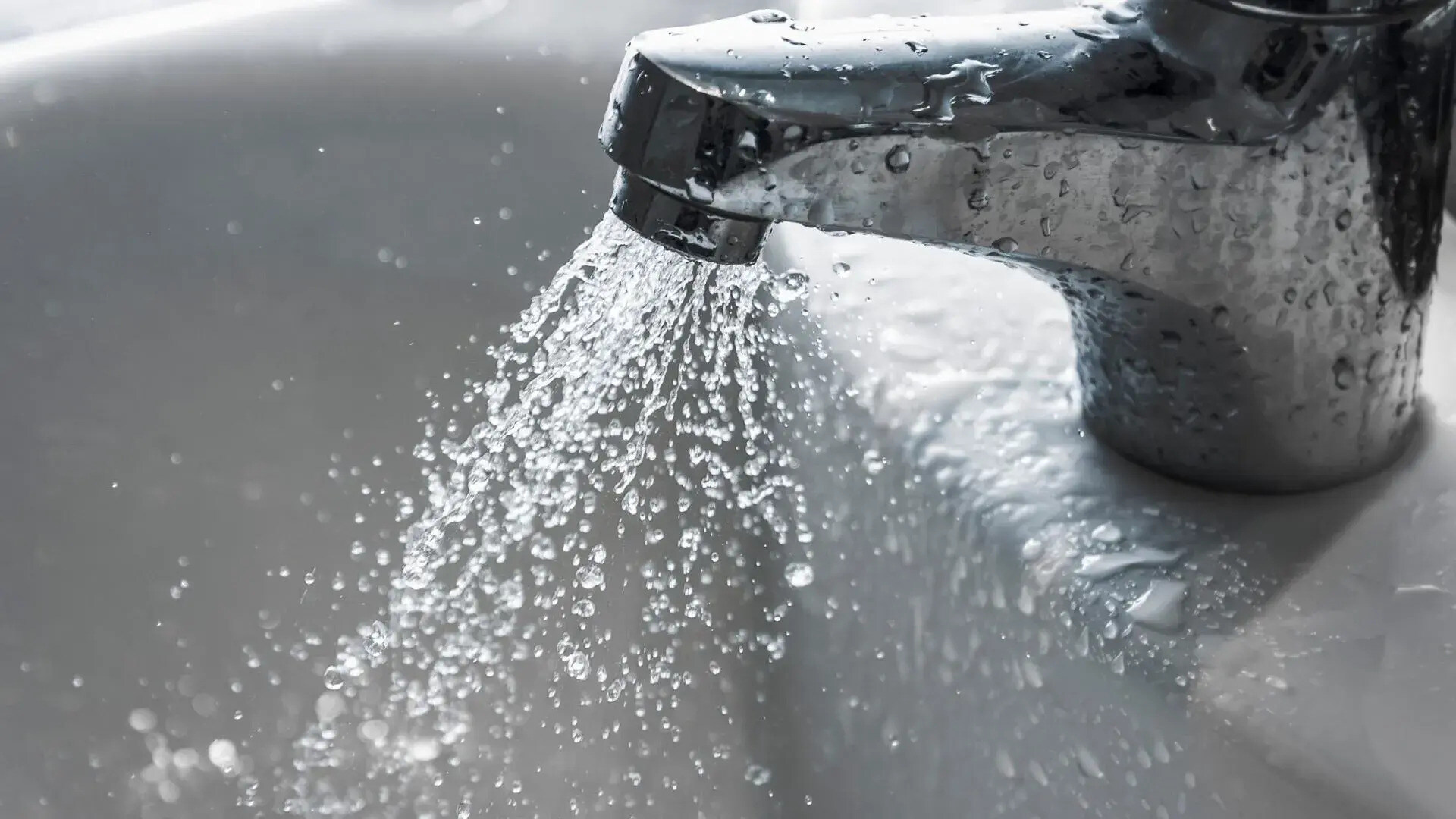
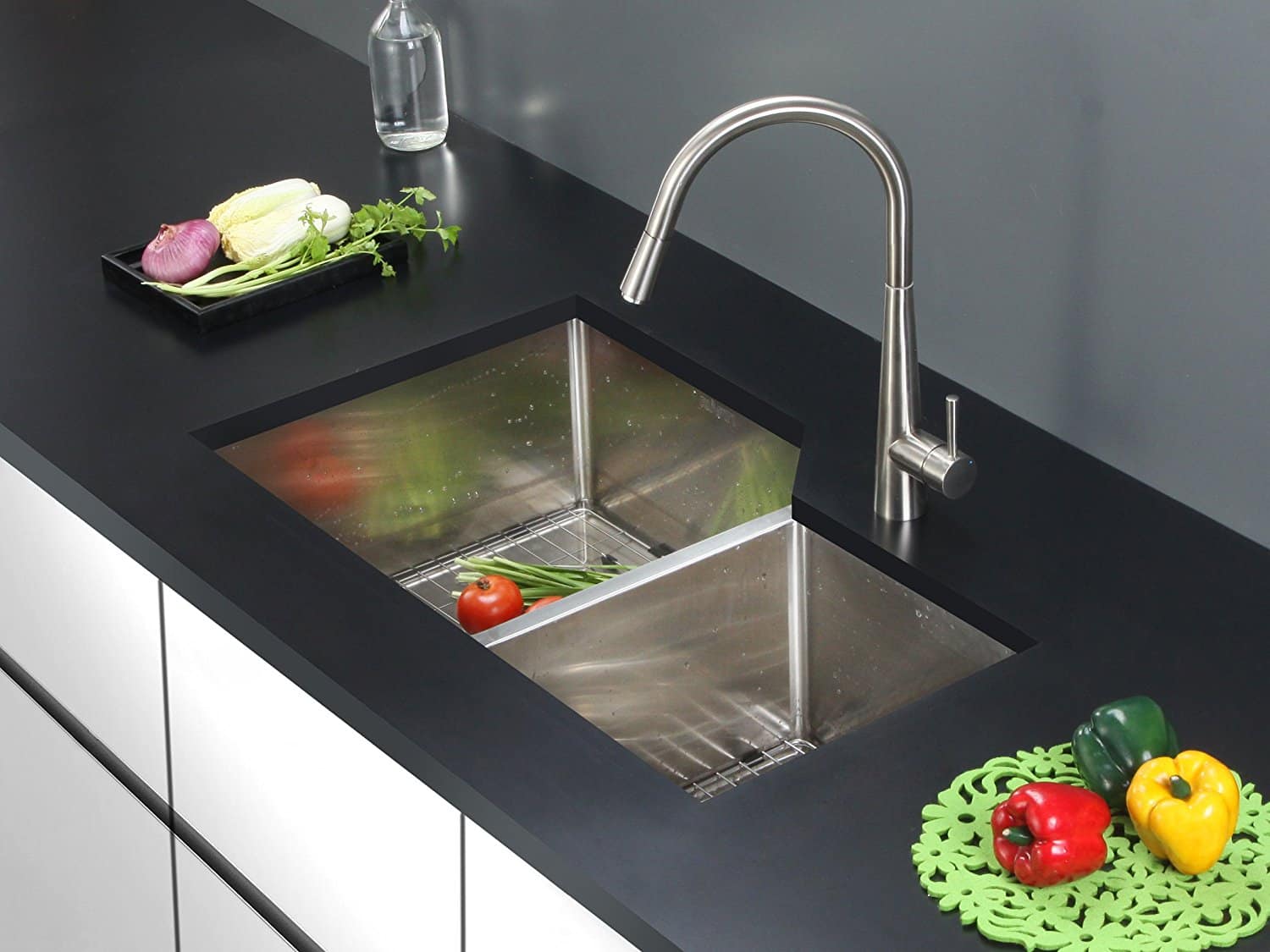

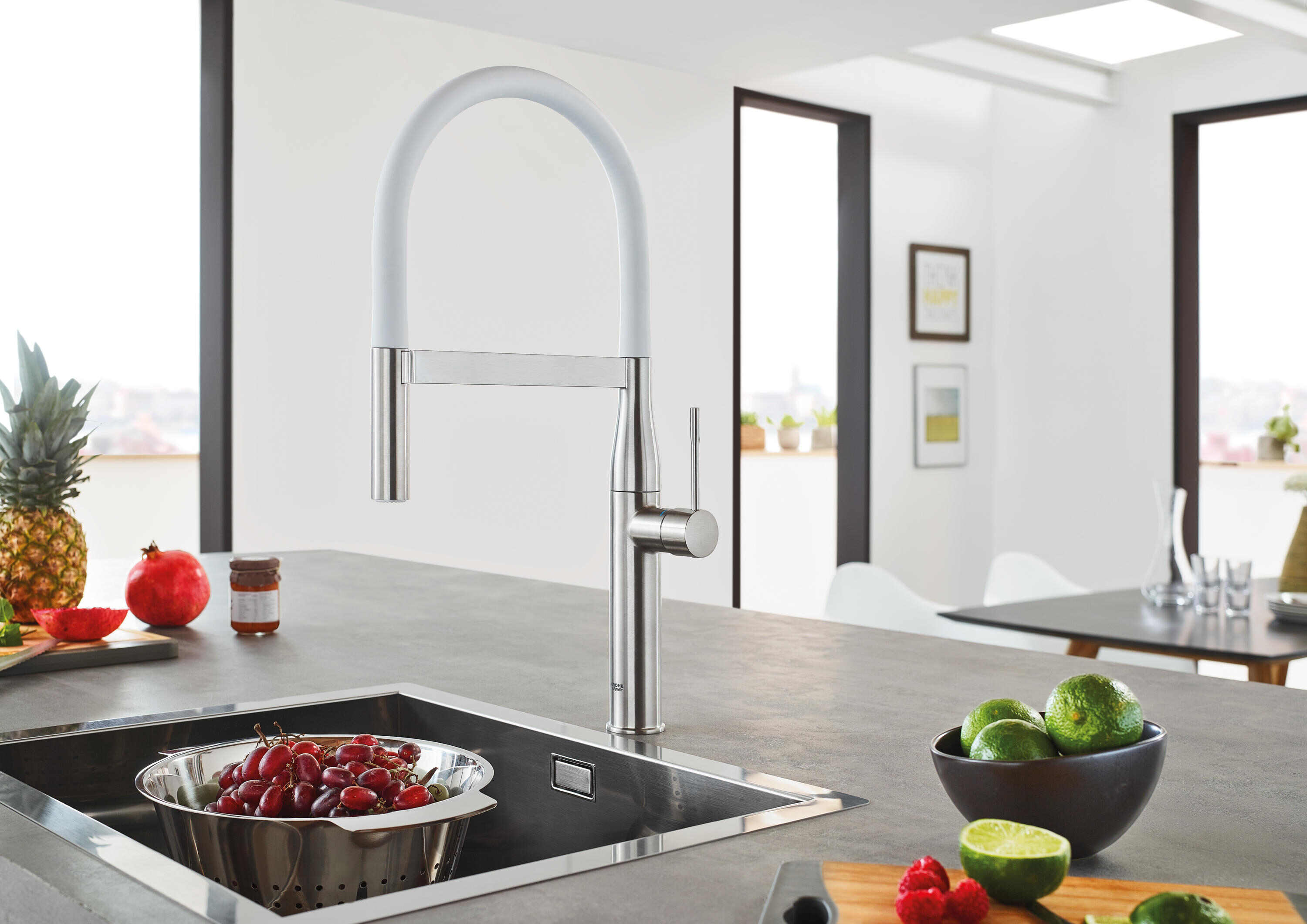
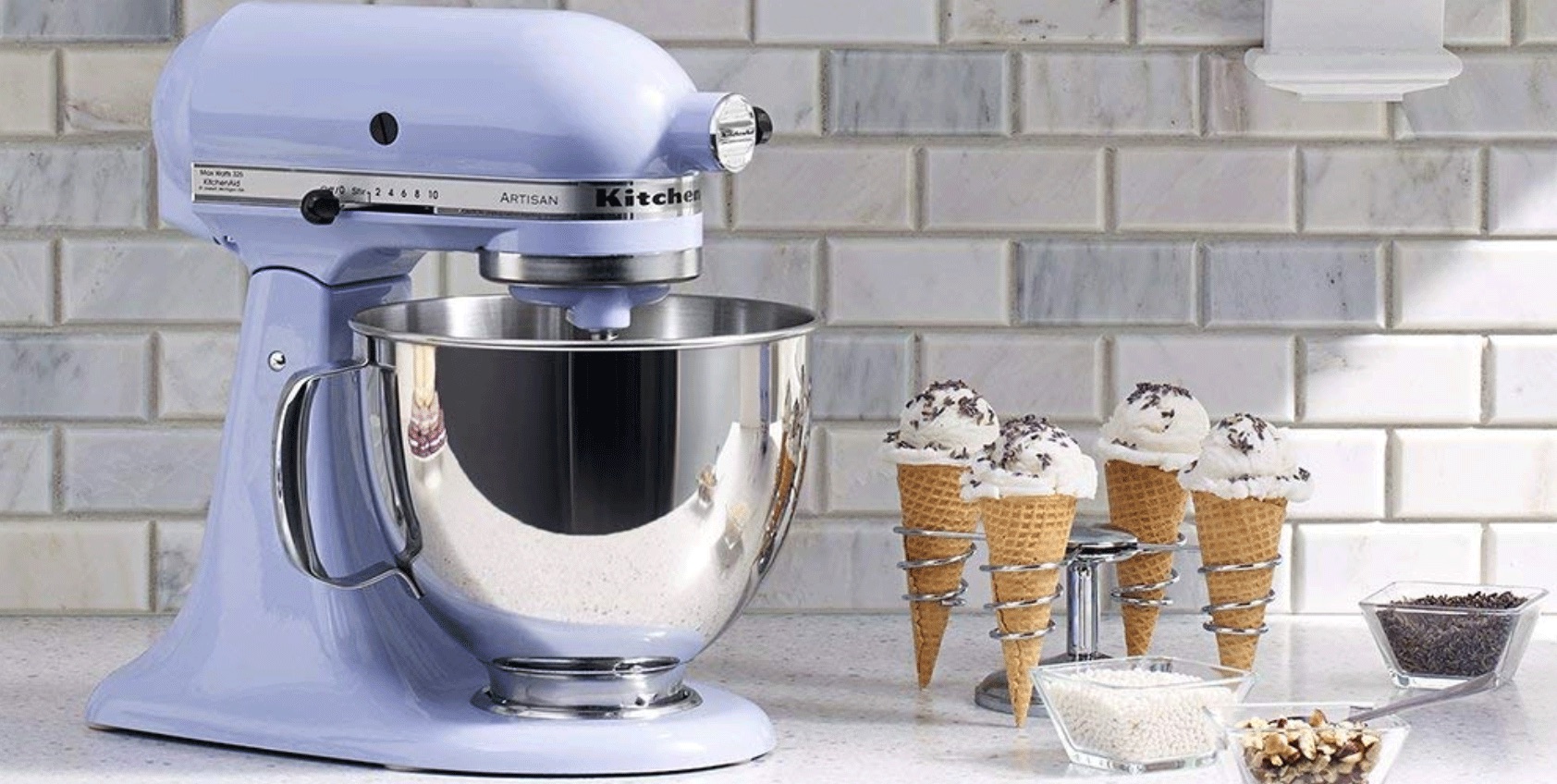
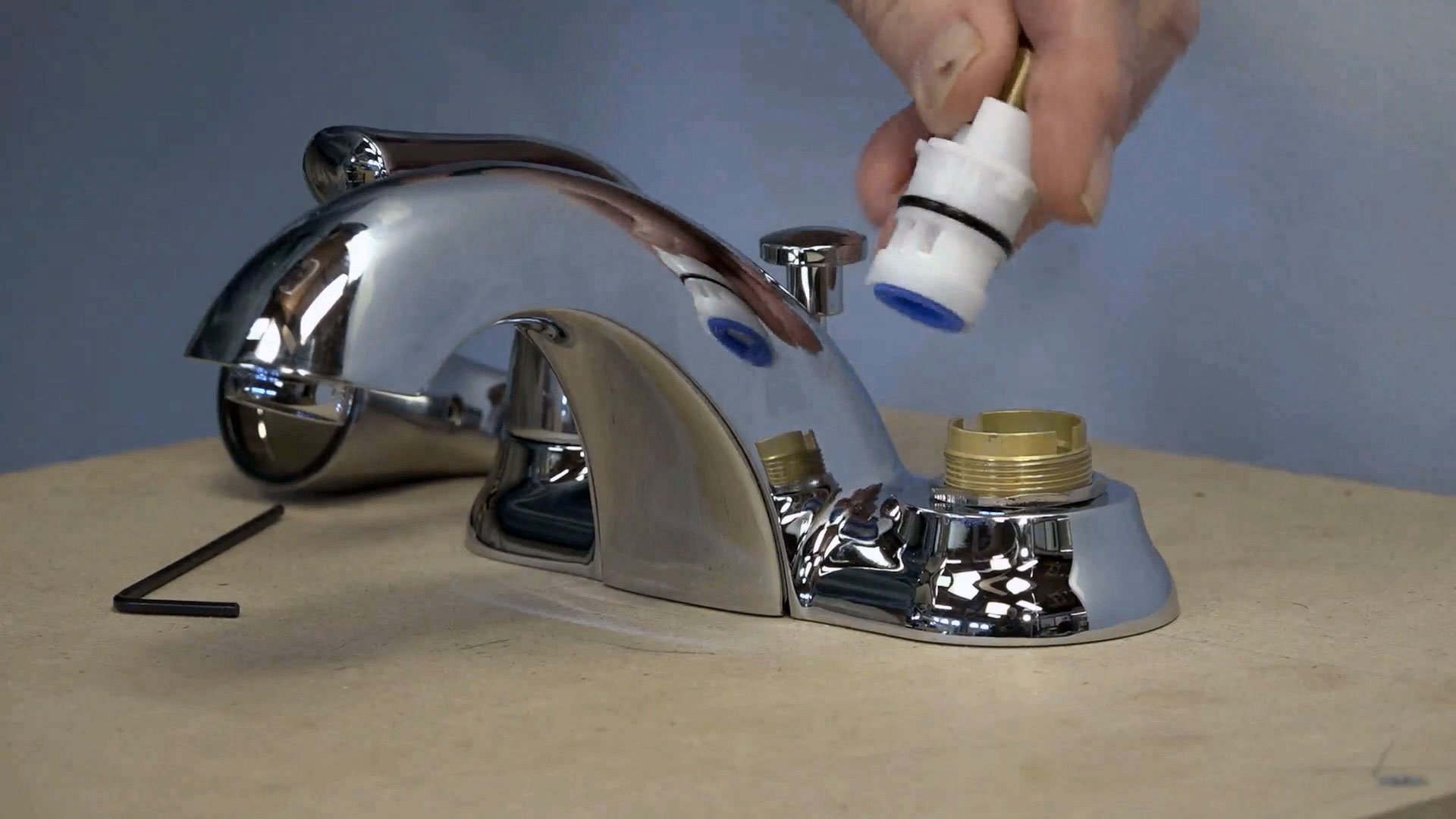

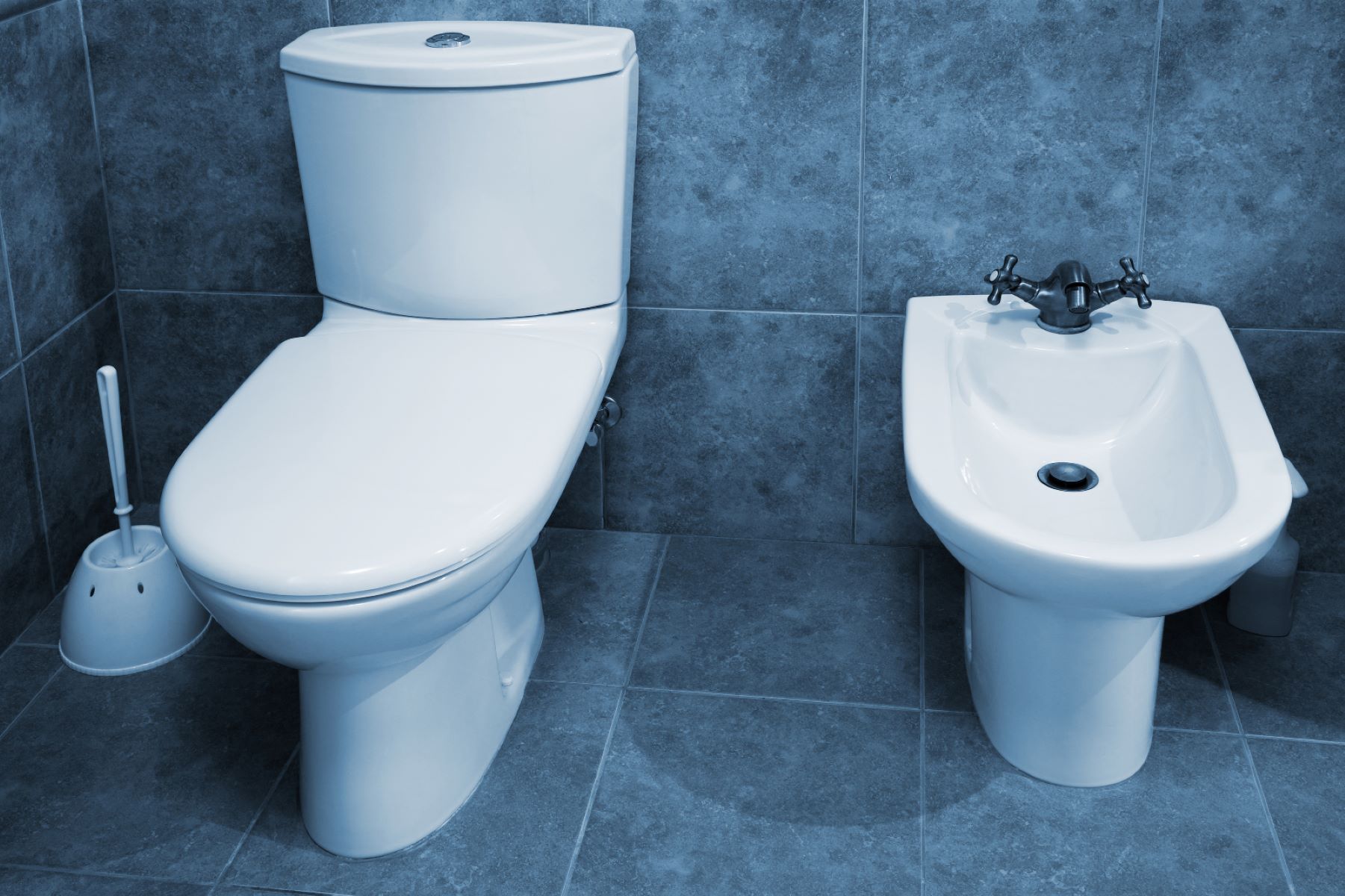
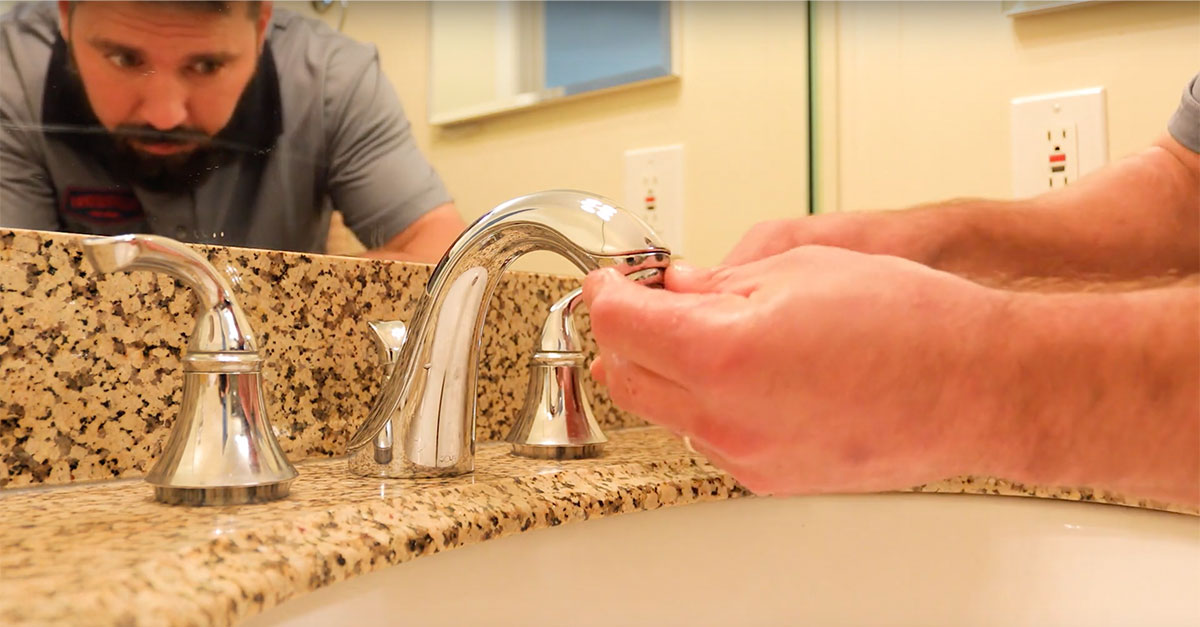
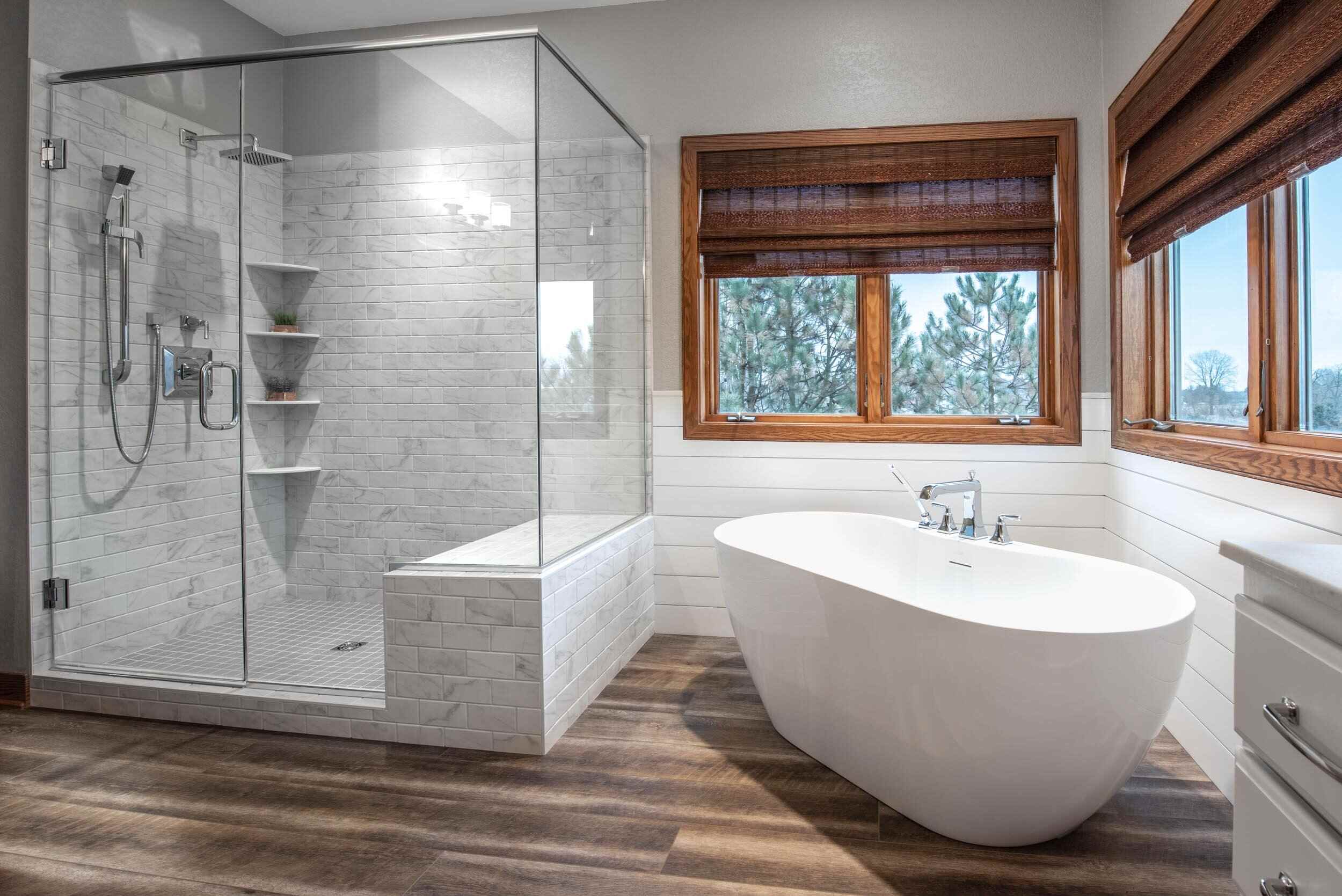
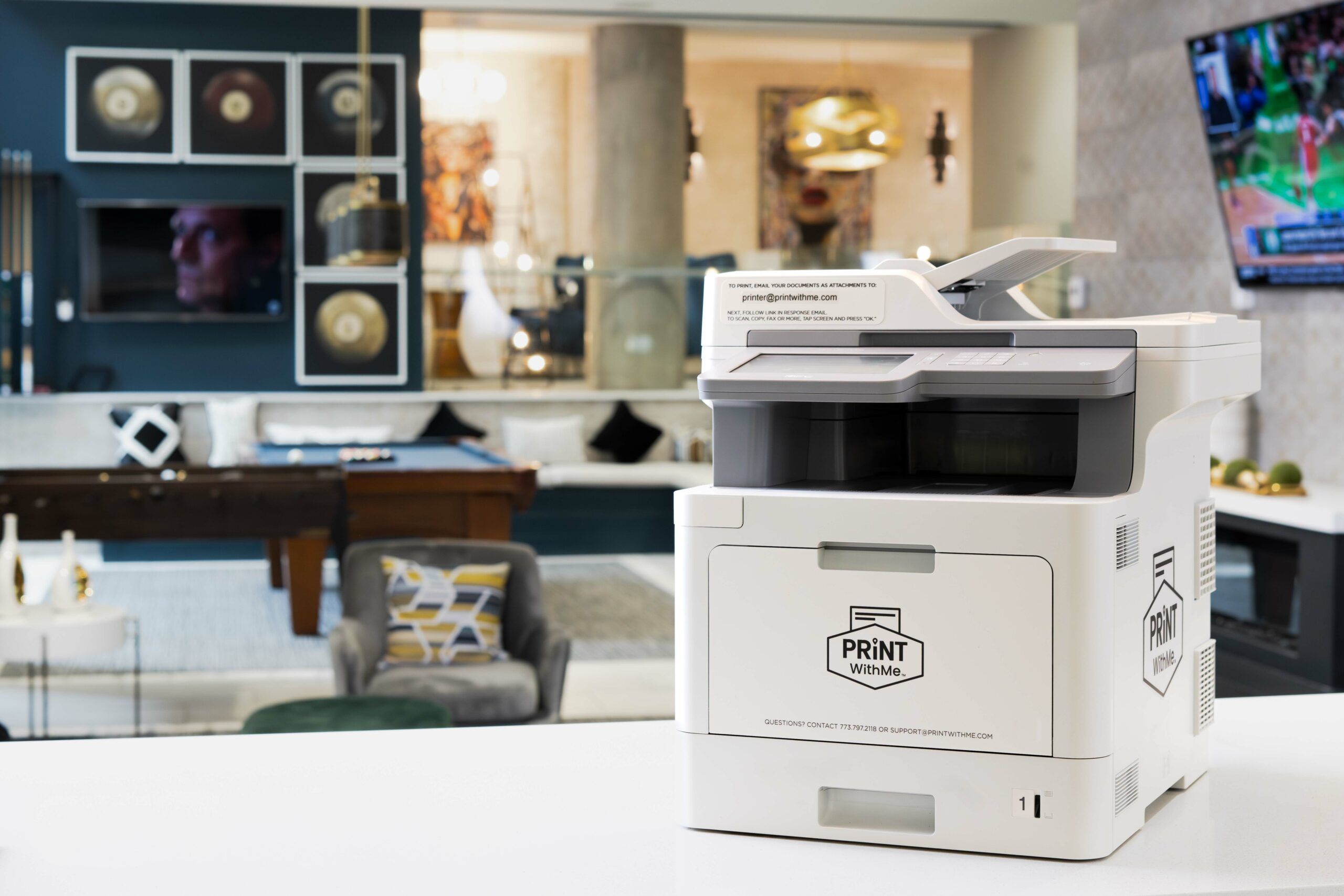
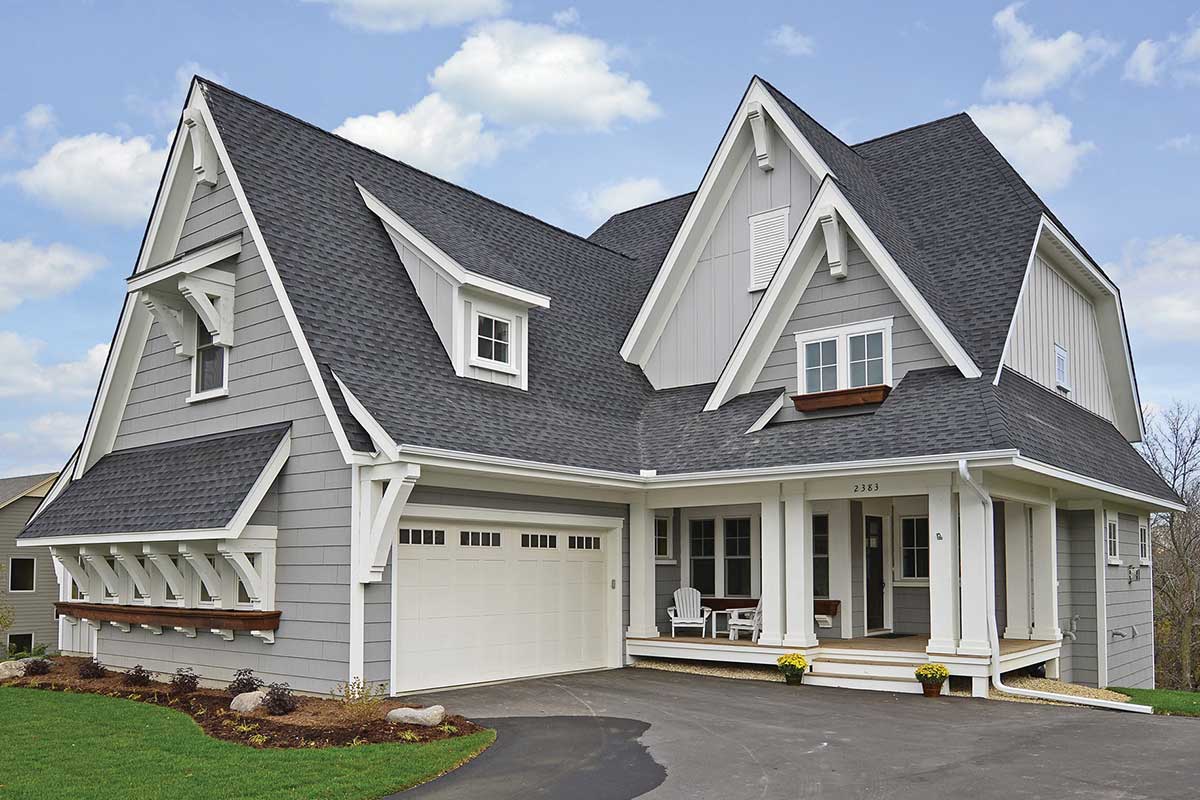

0 thoughts on “How To Choose A Kitchen Faucet”